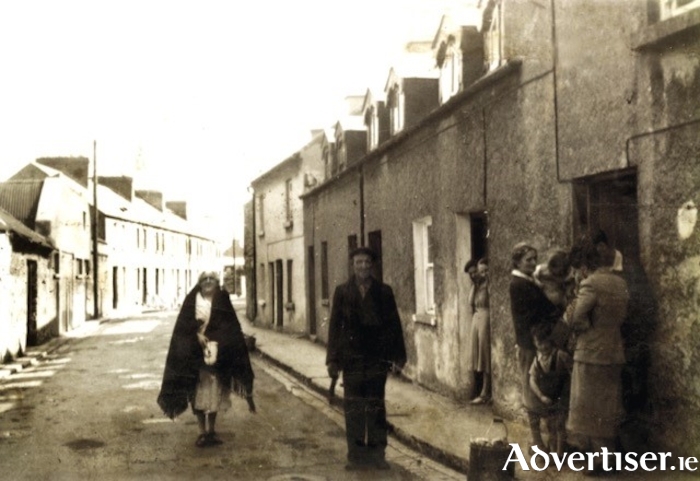Sickeen/Suckeen
According to O’Donovan’s Ordnance Survey Letters from 1839, “Suckine is now pronounced Suicín, which is, out of satirical humour frequently called Suicín na Mallacht, that is “Sickeen of the Imprecations or Curses”. It is written Sickeen Dyke in the Name Book and described as lying where the road from Galway to Menlo crosses the flooded land at Coolagh.”
The word Suicín means dyke, so the above may refer to the Dyke Road.
In various old maps it is spelt Sickeen, Suckeen, Succeen, Sikeen, Silkeen, Sickeen Lane, and in more recent times is described as St Brendan’s Avenue. There are people who believe that the name was related to dairy farming which was once an essential part of life here, the term suckler calf possibly having led to Suckeen and on to Sickeen. Some referred to it as Railway View, others called it St Brendan’s Avenue, but to locals it is always called Sickeen.
A number of people on the street kept cattle in the fields on the Headford Road and twice daily they were walked into Sickeen for milking. On fair days, farmers from Angliham would drive their cattle through Sickeen on their way to the Square, and the regular clean-up was an onerous job.
Our photograph, which shows the street c1940, was originally given to us by Therese Dolan and Anne Donnellan. The lady on the left was Mrs Kelly, the man in the centre was a chimney sweep named Davis from Bohermore, the two ladies standing in the doorway are Mrs McAuley and her daughter Susie, and the group on the right includes Eliza Kyne, Hubie and Gabriel Flaherty and Anne O’Mahony. Eliza Kyne was a great whistler until a priest told her that a whistling woman or a crowing hen put a curse on a house. That stopped the whistling.
On the left you can see the back of Anne Casserley’s house. Next door was Williameen Glynn’s, he kept cows and sold flour, etc, in Woodquay. Beside him was the back of Joe Young’s garage, then Packie Cunningham’s. The first house we see on the left was Halloran's, then Griffin's, Flaherty's, Shaughnessy's, Wall's, Hurney's, Conroy's, and Fahy's. Around the corner facing St Brendan’s School lived the Clancys and O’Shaughnessys.
The first house we see on the right was Flaherty's, then McAuley's, then Kelly's who had a small shop where they sold turf, paraffin, cabbage, etc. Next was Monaghan's where many of the farmers who attended the markets in Woodquay went for a meal, then Kinlay's, Mrs Hoban, a derelict house, and finally Melvin's.
A Sickeen of a later generation is evocatively described in a book written and published by Durcan Forde entitled Sickeen in the Rare Auld Times. It came out 10 years ago but very quickly went out of print. Sadly, Durcan has since passed away but his family have now decided to bring out another edition of his book. It is a delightful portrait of the street he grew up in, its families and its characters, the games they played, the tricks they got up to, what they worked at. Reading it is like sitting by the fireside listening to Durcan entertaining you with his memories. There are no pretensions about this book which is profusely illustrated and a charming record of times past. All of the proceeds of the book go to the Comfort Fund, UCHG, where Durcan passed away. Recommended.

